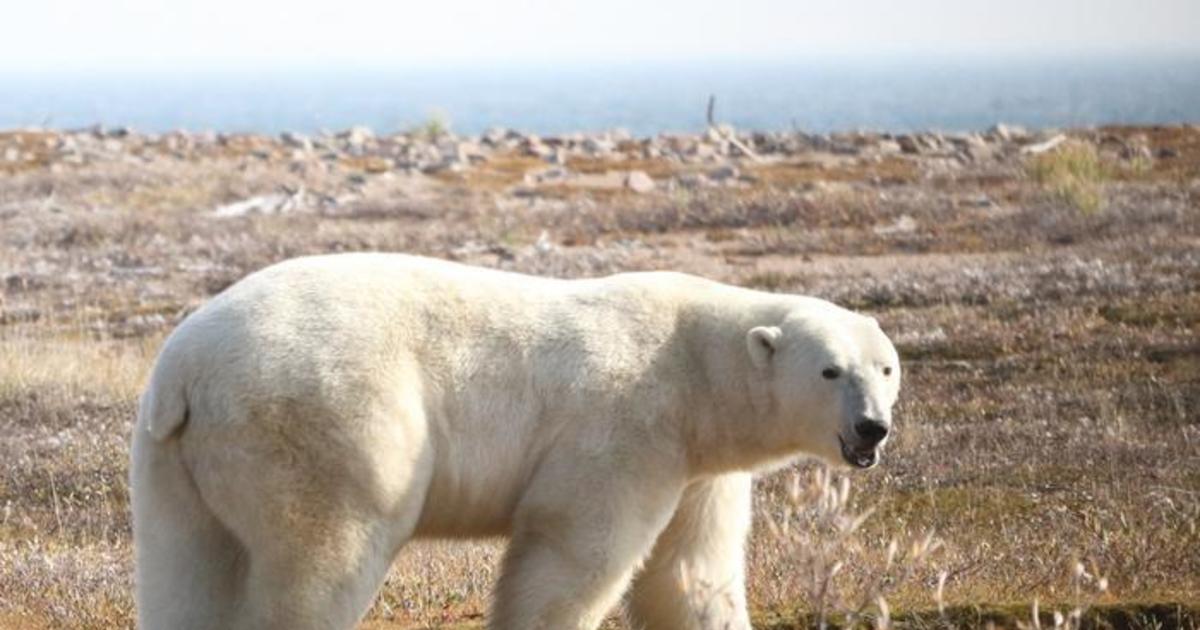Polar bears, unable to thrive on land in Canada’s Hudson Bay, are facing greater risk of starvation as Arctic ice melts and they endure longer ice-free seasons, researchers said.
In a study published Tuesday in the journal Nature Communications, researchers said they’d hoped polar bears might adapt to longer ice-free seasons by behaving like their grizzly bear relatives. The 20 polar bears tracked in the study tried a variety of strategies, including shifting their diet and resting more, but all but one bear lost weight.
“Neither strategy will allow polar bears to exist on land beyond a certain amount of time. Even those bears that were foraging lost body weight at the same rate as those that laid down,” said Charles Robbins, director of the Washington State University Bear Center and co-author of the study. “Polar bears are not grizzly bears wearing white coats. They’re very, very different.”
Most types of bears are “opportunistic omnivores,” according to the study, but polar bears feed almost exclusively on ice-dependent seals. They’ll also feed on whale carcasses, when they’re available, according to the National Park Service.
David McGeachy
“Further increases in the time polar bears are forced onto land where they are unable to hunt blubber-rich, energy-dense seals is likely to negatively impact their body condition, survival, and reproductive success,” researchers wrote.
The bears in the study, which researchers tracked for about three weeks using collars with video cameras and GPS, ate bird and caribou carcasses as well as berries, kelp and grasses. But foraging for the food used up valuable energy.
“The terrestrial foods did give them some energetic benefit, but ultimately, the bears had to spend more energy to access those resources,” said the study’s lead author, Anthony Pagano, who is a research wildlife biologist with the U.S. Geological Survey Polar Bear Research Program.
Three polar bears went for long swims, with one even traveling about 110 miles. Two of the swimmers found carcasses in the water — a beluga and a seal — but neither bear could feed on their finds while swimming. They were also unable to bring them back to land.
“As polar bears are forced on land earlier, it cuts into the period that they normally acquire the majority of the energy they need to survive,” Pagano said. “With increased land use, the expectation is that we’ll likely see increases in starvation, particularly with adolescents and females with cubs.”
The ice-free period increased by three weeks between 1970 and 2015, according to the study, keeping polar bears on land longer.
“Climate warming is increasing the duration that some areas of the Arctic are ice free, which in turn forces polar bears in these regions to move to land,” the researchers wrote.
Polar bears, the largest living bear species, are considered threatened by the U.S. Fish and Wildlife Service. A 2020 study warned that climate change was on track to wipe out polar bears by the end of the century.
Li Cohen contributed to this report.


